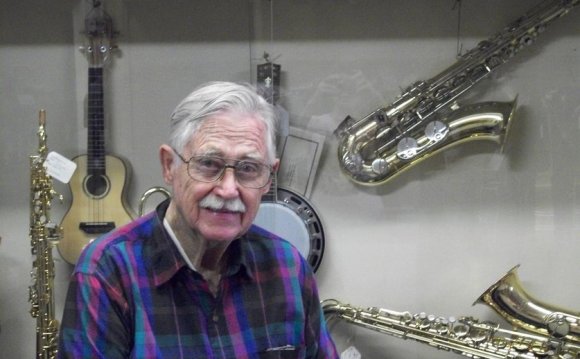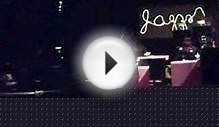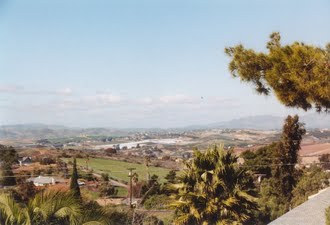
Dizzy Gillespie ended up being one of many main developers of bop during the early 1940s, along with his styles of improvising and trumpet playing were imitated commonly when you look at the 1940s and 1950s. Indeed, he's probably the most important people in the history of jazz.
Gillespie was the youngest of nine children. His dad, a bricklayer and week-end bandleader, died as he was ten. 2 yrs later on, he begun to show himself to play trombone and trumpet and later took up cornet. His music ability enabled him to wait Laurinburg Institute in new york in 1932 since the college required a trumpet player because of its band. During their years truth be told there, he practiced the trumpet and piano intensively, still mostly without formal assistance.
In 1935, he left school to participate their family members, that has relocated to Philadelphia. Soon he joined up with a band led by Frankie Fairfax, which included Charlie Shavers. Shavers knew most of the trumpet solos of Roy Eldridge, and Gillespie discovered all of them by copying Shavers (he previously formerly understood only a number of expressions by Eldridge, the man whom became their early role model). While he was at Fairfax's musical organization, Gillespie's clownish behavior earned him the nickname he has carried since. Gillespie left Philadelphia in 1937 and moved to nyc to try to come to be better-known as a jazz player. After sitting in with many different rings and at numerous jam sessions, he received work with Teddy Hill's huge band, mostly because he seemed just like Eldridge, who was simply Hill's trumpet soloist. The musical organization toured France and britain for 2 months shortly after Gillespie joined. On time for nyc, he once again worked in a number of teams, including Al Cooper's Savoy Sultans together with Afro-Cuban band of Alberto Socarras, before going back to Hill's musical organization.
In 1939, he joined Cab Calloway's huge band, among highest-paid black rings in New York during the time. While in this team, he began to develop a pursuit in the fusion of jazz and Afro-Cuban music, mainly because of his relationship with Mario Bauzi, who was additionally in Calloway's band. During the exact same duration, he had been starting to diverge from Eldridge's playing design both formally, inside the solos utilizing the musical organization such as for instance Pickin' the Cabbage (1940), as well as in a friendly context using team's double-bass player Milt Hinton. While on tour in 1940, Gillespie met Charlie Parker in Kansa City. Quickly he started taking part in after-hours jam session in nyc with Parker, Thelonious Monk, Kenny Clarke, among others. This number of younger, experimenting players gradual developed this new, more complicated model of jazz that has been becoming called bop. Recordings, including Kerouac (1941), made at Minton's Playhouse, exemplify this emergent style.
A dispute with Calloway generated Gillespie's dismissal in 1941. He then worked briefly with several leaders, including Ella Fitzgerald, Coleman Hawkins, Benny Carter, Charlie Barnet, Le Hite, fortunate Millinder, Earl Hines (whose band in addition included Parker), and Duke Ellington. With Millinder, he recorded a full, formed bop solamente within a swing musical organization context on Little John specialized (1942). After his solamente, the musical organization plays a riff which he developed into the structure Salt Peanuts. During the cold winter of 1943-4, Gillespie led a tiny group with Oscar Pettiford. In 1944, Billy Eckstine, the singer with all the Hines band, formed a big musical organization of their own and engaged Gillespie to play also to be the songs director. At about the same time, Gillespie made a few of the very first small-group bop recordings, some with Hawkins's musical organization yet others, including Salt Peanuts and Hot House, under their own title with Parker.
At the beginning of 1945, Gillespie organized his or her own temporary huge musical organization. Failing continually to achieve economic success using this team, then he formed a bop quintet with Parker in November. He later extended the group to a sextet, but their need to lead a huge band inspired him to try once more, which time he had been in a position to keep its members together for four years. During this time period, the band made some early tries to fuse Afro-Cuban rhythms with Afro-American jazz. Gillespie added Chano Pozo toward rhythm part, and the two males recorded Cubana Bel/Cubana Bop (authored by George Russell) and Manteca (by Gillespie and Pozo). By 1947, the musical organization's rhythm part consisted of John Lewis, Milt Jackson, Kenny Clarke, and Ray Brown, who continued to form the Modern Jazz Quartet. At numerous times such prominent bop people as J. J. Johnson, Sonny Stitt, James Moody, Jimmy Heath, Paul Gonsalves, and John Coltrane had been also people in Gillespie's musical organization. Financial pressures pushed Gillespie to give up the big band in 1950. A brief engagement as featured soloist with Stan Kenton's big musical organization then followed, and he organized a sextet. In 1951, he formed his or her own record company, Dee Gee; it, too, ended up being financially unrewarding and short-lived.
At the beginning of 1953, some one inadvertently dropped on Gillespie's trumpet, that has been sitting upright on a trumpet stand, and bent the bell back. Gillespie played it, unearthed that he liked the sound, and from that point on had trumpets designed for him utilizing the bell pointing upwards at a 45 degree position. The look is their artistic trademark — for over three decades he had been practically the only real major trumpeter in jazz playing these types of an instrument. In 1956, after years leading small groups, Gillespie formed another big band specifically to journey Iran, Lebanon, Syria, Pakistan, chicken, Greece, and Yugoslavia on a cultural objective for the United States state dept., and a few months later another sponsored trip to South America took place. He kept the musical organization together for two many years, but without federal government investment he was struggling to hold such a big ensemble working, in which he returned to leading small groups. Gillespie carried on to perform and capture thoroughly with his numerous small teams to the late 1980s. Also, he showed up periodically in all-star teams like the Giants of Jazz (1971-2), a sextet with Kai Winding, Sonny Stitt, Thelonious Monk, Al McKibbon, and Art Blakey. Additionally, he had been a frequent performer on Caribbean luxury cruise ships that featured jazz musicians and artists.
Although he had been when regarded as a musical iconoclast, his music isn't any much longer considered radical. He could be viewed instead as an elder statesman of jazz, along with his outbound character and impish love of life endeared him toward general public through appearances on television.
Where is intelligence in the brain? Where theory learning? Who activities during covid 19? How to be consistent as a leader? How much blogger earn? How much recruitment agencies charge in india? Which subject is best for ba? Why intelligence tests are flawed? Why meaning in hindi? What's facility? Why grow lavender? Whose gen z? How many recruiters use linkedin? How meaning native american? How many means of egress required residential basement? How favorite in asl? How leadership impacts organizations? Who uses euros? Who influence you? Where math comes from? How many internet gateways per vpc? How often does games workshop restock? Where to classify bad debt expense? How developer should write a code? When career path? What is leadership and how to be a good leader? Why leadership is important in business? Where to find object manager in salesforce classic? Whom concern? How many important bases of classification of data? Why activities are important for students? Where to create a resume? Why improving english is important? Why examples are used? Why influence diagram? Where does classification mean? Whom dictionary? How much users does tiktok have? Where to import jdm cars? Where to travel for activities? What facility deals with mental disorders? How often does jerry's workshop open? Where to sample le labo? How important is technology in education? Where are facebook users from?INTERESTING VIDEO












